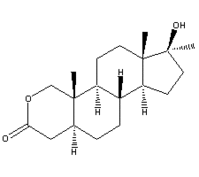Learn how to advise him about the role of good nutrition in managing his disease.
If your patient has chronic obstructive pulmonary disease (COPD), his nutritional status can influence the severity of his disease. To complicate the picture, circumstances related to COPD can make getting good nutrition difficult. Let's review why a patient with COPD benefits from eating well and how his disease creates barriers that can lead to malnourishment. Then learn how you can help your patient reach and maintain good nutrition despite his disease.
Easing breathing
Chronic bronchitis and emphysema are different forms of COPD, but most adults with COPD have features of both. A characteristic they share is airflow obstruction that causes shortness of breath and chronic cough. Good nutrition can ease breathing in someone with COPD by keeping his diaphragm and other respiratory muscles strong. It also helps the body fight off infections such as pneumonia and improves pulmonary function. Maintaining a desirable body weight and supporting the immune system are vital nutritional goals for your patient.
Maintaining or achieving a desirable body weight. People with COPD tend to be underweight, and this can pose problems. The work of breathing increases with COPD, along with metabolic rate and energy needs. If the patient doesn't take in enough calories to meet the demand, he loses weight and muscle mass, including respiratory muscle mass. Breathing and eating become harder and he might have to choose between taking a gasp of air or a bite of food. This perpetuates a cycle of weight loss and muscle wasting (hypermetabolism/catabolism).
Recent research has shown promise helping patients gain weight and improve muscle strength using the oral anabolic steroid oxandrolone (Oxandrin). Building muscle mass and replenishing protein stores can increase strength in the lung muscles and diaphragm to help ease breathing.
Excess body weight in someone with COPD increases the workload on the heart and lungs. This cardiovascular and respiratory compromise may prevent enough oxygen from reaching all parts of his body. Excess fat in the abdomen also crowds the diaphragm, preventing full expansion of the lungs. If the patient loses weight and builds more lean body mass through proper diet and exercise, his breathing should be easier and he'll feel healthier and more energetic.
Supporting the immune system. The white blood cells that fight infection are made of proteins, so a diet that's deficient in protein, calories, vitamins, and minerals may prevent the body from building immune factors needed to fight infection and repair damaged tissue. (See Nutrition: A Sum of Its Parts for details on the various nutrients.) Protein deficiency is common among people with COPD and puts them at risk for respiratory infection. Infection, in turn, can perpetuate the debilitating cycle by decreasing appetite and increasing caloric needs.
Doing your part
Coordinating with a dietitian, you can help a patient with COPD achieve optimal nutrition. Depending on his individual needs and the progression of his disease, use these interventions:
* Provide three small meals and three snacks daily to prevent his stomach from becoming too full. Large meals distend the stomach and crowd the diaphragm. Multiple smaller meals will encourage him to eat more if his appetite is poor.
* Offer larger meals early in the day, when the patient is more likely to be mobile and have better digestion.
* Encourage him to remain upright after meals to prevent his stomach from pushing on his diaphragm.
* Teach him to prevent bloating by limiting his intake of carbonated beverages and avoiding gas-forming vegetables, such as raw apples, onions, asparagus, beans, peas, broccoli, cabbage, cauliflower, corn, melons, peppers, radishes, and turnips.
* Keep fruit juice and water readily available in the refrigerator or at the patients bedside to encourage him to drink fluids.
* Advise him to rest before meals.
* Provide soft, easy-to-chew foods to prevent him from becoming short of breath while he eats. Specialized liquid supplements are also available.
* Remind him to eat various foods at home to make sure he gets enough vitamins and minerals. Consuming fortified foods such as cereal or mashed potatoes and several snacks throughout the day can help him meet his needs.
Teaching and practicing
Maintaining a healthy weight and getting enough nutrients can help a patient with COPD ease his breathing and protect against infection. By teaching him the importance of good nutrition and helping him achieve it, you help him manage his disease and ward off complications.
SELECTED REFERENCES
Colorado Health Site. Chronic Obstructive Pulmonary Disease (COPD) Center, http://www.coloradohealthsite.org/COPD/copd_main.html. Accessed March 1, 2003.
National Jewish Medical and Research Center. Management of Chronic Obstructive Pulmonary Disease (COPD), http://www.njc.org/medfacts/management.html. Accessed March 1, 2003.
Yeh, S., et al.: "Reversal of COPD-Associated Weight Loss Using the Anabolic Agent Oxandrolone," Chest. 122(2):421-428, August 2002.
By Peggy O'Neill, RD, LD/N, MS
Peggy O'Neill is a registered licensed dietitian at Hillcrest Nursing and Rehabilitation Center in Hollywood, Fla. She teaches nutrition at Miami Dade Community College and serves on the board of the Miami and the Florida Dietetic Associations.
Copyright Springhouse Corporation Dec 2004
Provided by ProQuest Information and Learning Company. All rights Reserved



